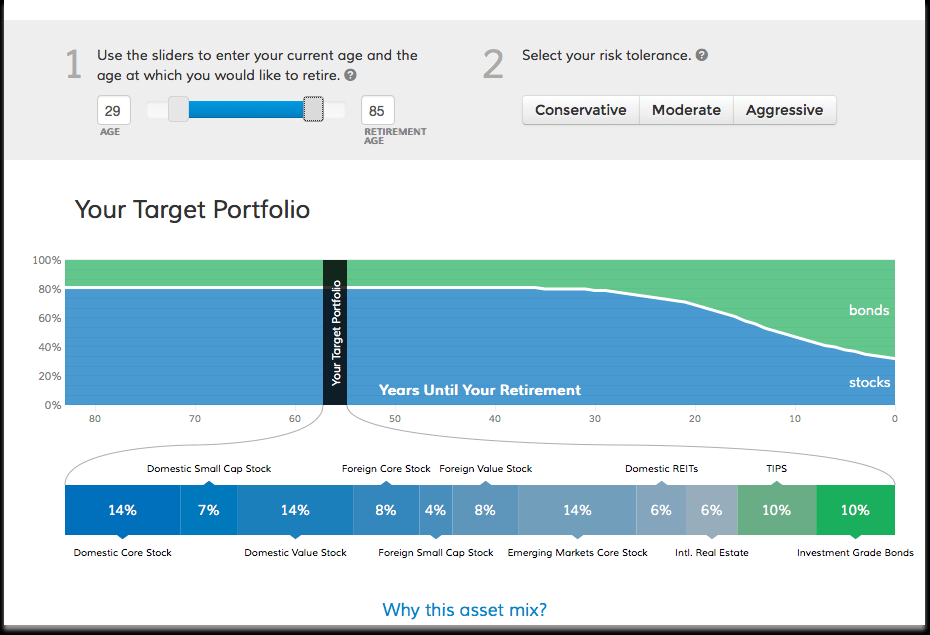Between a Rock and a Hard Place: How BlackRock is Winning the War on Technology

How do you stay ahead of your competitors when you manage more money than the GDP of China, Japan or the United Kingdom?
This a problem BlackRock, the world’s largest asset manager, faces every day. With $5.7 trillion dollars of assets under management, BlackRock must be on the forefront of both investing and technology in order to continually add value to the institutions and individuals it serves. While many see BlackRock as simply a financial institution, its supply chain is similar to a manufacturing company. BlackRock produces widgets (financial products in this case), leverages a supply chain for distribution, and ultimately seeks to gain insight from a consumer to better meet demand and create products tailored to the consumer’s needs.
The Importance of Digitalization and Technology for BlackRock
In the past few years digitalization and technology have quickly changed asset management and fund distribution, making this trend a top priority for BlackRock’s management team. Retail investors are increasingly focused on managing their own finances in a digital way. This trend is driven by demographics, the advent of online trading, and technology enabled investing such as robo-advisors and automated investing advice platforms [1]. Investors are demanding more advanced tools, better information and improved technology to manage their financial futures [2]. In conjunction, BlackRock is also facing the challenge of investor demand for more passive investment products versus active ones. Passive funds represent investment products that are low cost and simply track an index, while active investing uses managers to actively manage a portfolio and make investment decisions, albeit at higher fees [3]. With the development of Exchange Traded Funds (ETFs), a tradable investment product that replicates an index, all types of investors now have access to cheap and easily accessible investment products. Ultimately these two trends, increased technology demand from consumers and ETFs, are shaping the distribution and product development of the asset management industry.
ETFs Explained [4]
BlackRock’s Strategy for Disrupting Distribution and Product Development
As we think about these industry challenges it is important to understand how BlackRock is leveraging digital technology to enhance its supply chain by innovating on product development, improving its distribution capabilities and better understanding consumers’ demands.
First, BlackRock is investing in its own digital future and focusing on technology for the long term. Larry Fink, CEO of BlackRock, has committed to a goal of having “$5 billion in technology revenue…representing 30% of the business.” [5] Today technology revenue represents only 7% of total revenue [6]. Most recently, BlackRock has put its money where its digital mouth is by acquiring FutureAdvisor. FutureAdvisor is a digital investment manager that leverages automatic portfolio management. This automated investment platform will be marketed to financial advisors who will then sell to consumers (a B2B2C strategy). This essentially makes the FutureAdvisor platform a distribution channel to grow BlackRock’s iShares ETF business [7].
By having a stronger digital channel by which to connect with consumers and sell products, BlackRock also gains more insight into what consumers and their advisors are demanding. This all leads to a supply chain that allows for faster “manufacturing” of new products (i.e. ETFs), wider distribution of products and faster information flow on consumer behavior. More recently, BlackRock has acquired Scalable Capital, a European robo-advisor, and iCapital, a technology enabled alternative investment platform. These acquisitions represent both a long and short-term focus on staying ahead of the curve and drive technology revenue [8].
Future Advisor Sample Investment Template [9]
Staying Ahead of the Curve
There are multiple areas where BlackRock can continue to innovate across its product development and distribution channels. In the short term, BlackRock can continue to identify key customers and digital distribution platforms to create stronger touchpoints with consumers and their financial advisors. In the longer term, artificial intelligence will be a tool that can be leveraged across BlackRock in areas including investing, operations, and client management. Specifically in investing, machine learning and data analytics will be able to create lower risk and higher return financial products faster and cheaper, enabling BlackRock to more effectively compete in ETFs and leverage the distribution platforms it has been building/acquiring [10]. BlackRock knows it must continue to innovate and is already leveraging artificial intelligence in parts of its investment platform through its Scientific Active Equity business. The company is even using AI to make better investments in Impact and Sustainable Investing[11].
Open Questions
While BlackRock has been on the forefront of innovation in asset management there are still several questions and risks that must be addressed. Will BlackRock be able to convince individual investors to rely on financial advice from a digital platform? Further, as BlackRock plans to grow its digital business how will it manage the constant competition for technology talent?
(Word Count 762)
[1] “Technology Changing Face Of ETF Biz | ETF.Com”. 2017. Etf.Com. http://www.etf.com/sections/features-and-news/technology-changing-face-etf-biz?nopaging=1.
[2] Fairbairn, Rob. 2017. “The Future Of Fund Distribution”. Fnlondon.Com. https://www.fnlondon.com/articles/fn-future-of-finance-fund-distribution-rob-fairbairn-blackrock-20161003.
[3] “The End Of Active Investing?”. 2017. Ft.Com. https://www.ft.com/content/6b2d5490-d9bb-11e6-944b-e7eb37a6aa8e.
[4] 2017. Image. https://i.investopedia.com/inv/articles/features/what_is_an_etf_fullsize.png.
[5] “Blackrock’s Gary S. Shedlin To Present At The 2017 Morgan Stanley Financials Conference”. New York, New York, 2017.
[6] BlackRock, Inc. “Blackrock 2017 3rd Quarter 10Q.” October 11, 2017.
[7] “Disruptor And Disrupted Strategy In The Digital Vortex”. Global Center for Digital Business Transformation. 2017.
[8] BlackRock, Inc. “Blackrock 2017 3rd Quarter Earnings Conference Call.” October 11, 2017.
[9] Xu, Jon. 2017. “Improving Your Portfolio Just Got Easier | Futureadvisor Blog”. Futureadvisor Blog. http://blog.futureadvisor.com/improving-your-portfolio-just-got-easier/.
[10] PwC. “Live digital or die – The digital challenges that ETF sponsors and service providers must confront.” 2018. https://www.pwc.com/us/en/asset-management/investment-management/publications/etf-digital-challenges.html
[11] BlackRock, Inc. “Blackrock 2017 3rd Quarter 10Q.” October 11, 2017.





Would be great to hear more about how Aladdin plays into their overall strategy
Thanks for the article, EL. Fintech is really interesting space in my opinion because it doesn’t seem like there is a specific technology, whether it’s digital investment management or robo-advisors, that serve as true competitive differentiators from the other firms in the space; this technology can and has been duplicated by the other big firms and players in the space. Furthermore, it’s difficult for a new company to truly break out as a viable company in this space because customer acquisition is so expensive!
In the future, I foresee any new interesting technology would be either quickly duplicated by big firms (such as Blackrock and Fidelity) or being quickly acquired and adopted into parent company (such as Futureadvisor). I think this will be how they get experienced and elite developers to work for them.
EL – Great read, especially because of the widespread impact of digitization on Blackrocks’ product development.
Seems like Blackrock is using digitization for 3 areas of product development & distribution: (1) enhance returns/ smarter strategies to identify investments, (2) predict customer demand, (3) distribution through partners/ acquisitions.
The only caution I’d see is in over-relying on existing/ new products to gauge customer demand (2). In other words, if customer preference is variable we’re trying to predict, it may be inefficient to approximate it by looking at current market’s solutions. Instead, Blackrock could use user engagement data from its online user dashboards and/or integrate feedback from its financial advisors that clients have shared. These might be more direct proxies for customer preferences & demand — thereby enabling Blackrock to innovate outside the current market constraints and more directly address customer preferences.
Thanks so much for the interesting article! The biggest question that comes to mind reading about BlackRock’s digital strategy is what their strategy around cybersecurity is. I can imagine cybersecurity is one of the largest concerns of both the firm and its investors as more and more of their management tools move online.
Great article, EL! In explaining BlackRock’s supply chain, I really appreciated your analogy to manufacturing. I’ve never thought about it that way before and found that as a very clear way to track their system.
Concerning your questions at the end, I’m not too worried about convincing customers to rely on a digital platform for financial advice. There are already so many algorithms that have a disproportionate influence on our decision-making that I don’t think this as big of a leap for a consumer. The harder sell, I think, will be convincing the financial industry itself. Coming from a financial consulting firm before HBS, I think convincing managing directors at large firms to believe that computers can deliver the same value to customers that their research can will be a really difficult challenge.
Your second question is also a fascinating one. Recruiting effort and money, along with headcount distribution, is such a sensitive subject for companies. I think this makes attracting technological talent a two-fold issue: 1) will the company give enough time, money, and headcount to building out a reputable technology department and 2) what will its strategy be to attract talent away from traditional technology companies? We really struggled with this in my last job–BlackRock is going to have to really commit to the initiative in both word and deed in order to be successful.